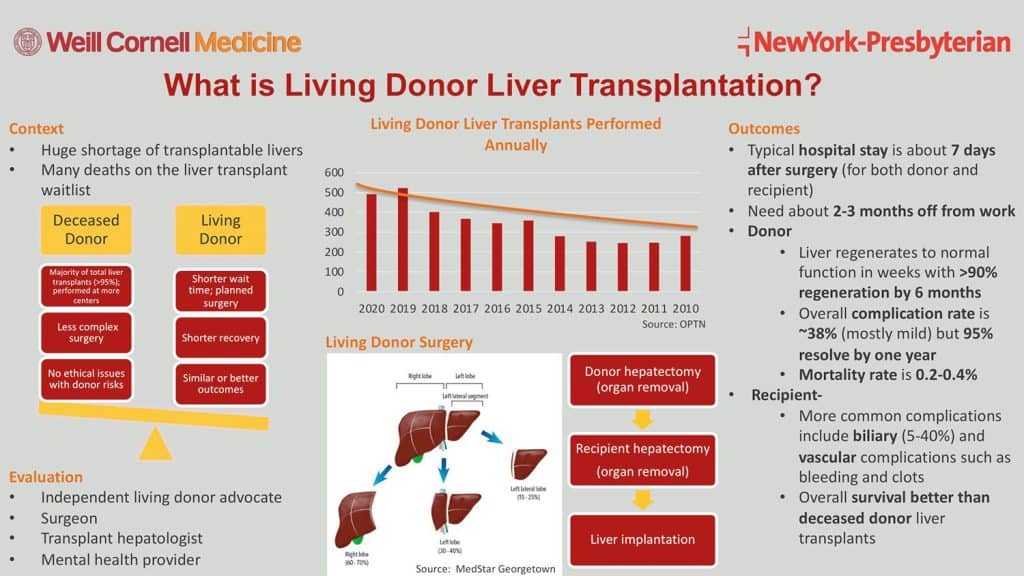What is Living Donor Liver Transplantation?
Nabeel Wahid and Robert S. Brown, Jr.
Weill Cornell/NewYork-Presbyterian Hospital
This presentation is an excerpt from the ALF 2021 Poster Competition. This competition showcases posters and a brief video created by early career investigators from across the country on six areas of educational focus: fatty liver disease, liver cancer, liver transplantation, pediatric liver disease, rare liver disease and viral hepatitis. Participants are tasked with translating complicated medical information into a poster which can be easily understood by patients or the public. Posters are reviewed by a formal panel of judges comprised of Medical Advisory Council members, Board Members and friends of ALF to select a winner in each category.

There is currently a huge shortage of available deceased livers, and many patients die waiting for a liver to become available. This is why living donor liver transplantation is becoming a popular alternative. Living donor transplants are when you take part of a liver from a healthy, living adult and transplant it to a patient who needs a liver. Today, the vast majority of liver transplants are deceased donor, mostly because it’s a less complex surgery and more transplant centers have the skills needed to perform the surgery. The advantage of living donor transplants is that they are planned surgeries. The liver is usually donated electively by a family member or a friend; there’s also a shorter recovery time and the outcomes are similar or better than deceased donor transplants. The evaluation process for living donor transplants involves a multidisciplinary team. The surgery is actually three surgeries in one! It involves removing part of the liver from both the donor and the recipient. The healthy liver is then implanted into the recipient in the last part of the surgery. The typical hospital stay is 7 days after the surgery with about 2-3 months of recovery time. Unlike many other organs, the liver can regrow over time. By about 6 months, >90% of the liver regenerates. Most of the complications for the donor are mild and there is a very low mortality rate. For the recipient, common complications include issues with bleeding, clotting, and the biliary tract. Fortunately, survival with living donor transplants is better than deceased donor transplants.
Last updated on December 1st, 2022 at 02:47 pm